#a history of china
Text
I was considering reading Murderbot next, funnily enough. I can't help but feel the universe is giving me hints.
#just finished reading a history of diving#a history of china#the communist manifesto#and a mediocre horror book about fishing#so it would certainly be a change of pace
9 notes
·
View notes
Text


Although located in the heart of Chongging, one of China's mega cities, Luohan Temple was constructed over 1000 years ago. Its ancient corridors lead to worn stone depictions of the Buddha while its wooden halls wafts with incense and are adorned with hundreds of local colourful deities.
12K notes
·
View notes
Text
this poll brought to you by the realization that i haven't felt an earthquake in 14 years since moving away from my home state and it's weirding me out that i miss them.
plz rb for science, thanks!
#also there's some fun history about the 1906 san francisco earthquake and its effect on immigration from china but that's another post#polls
6K notes
·
View notes
Text


Turquoise inlaid bronze dagger axe (ge polearm), China, Shang Dynasty, 1600-1050 BC
from Sotheby's
3K notes
·
View notes
Text

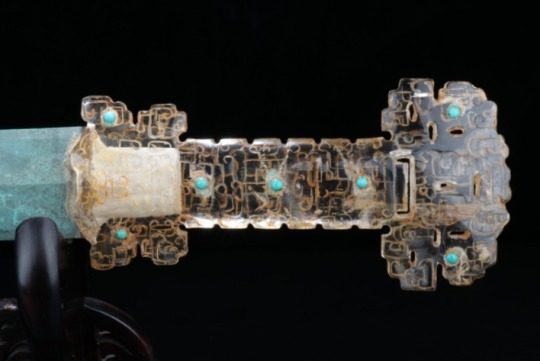
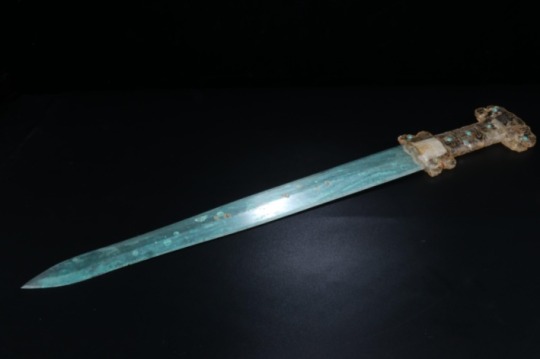
Chinese Bronze Sword With An Inlaid Rock Crystal, Turquoise and Gold Hilt
Warring States Period, Circa 4th - 2nd Century B.C.
#Chinese Bronze Sword With An Inlaid Rock Crystal Turquoise and Gold Hilt#Warring States Period#Circa 4th - 2nd Century B.C.#bronze#bronze sword#ancient artifacts#archeology#archeolgst#history#history news#ancient history#ancient culture#ancient civilizations#ancient china#chinese history#chinese art#art
5K notes
·
View notes
Text
first day as a small-town sherif and you discover that some of the convicts you're transporting managed to escape in the night and since the penalty for letting prisoners escape is death, and the penalty for being late because you were looking for escaped prisoners is also death, you decide to free ALL of them and go hide out in the wilderness for a bit, except the convicts are super grateful so they make you their leader and it turns out they're decent guys who were exploited by a tyrannical government, so long story short you're crowd-sourcing for a peasant uprising and would anyone like to chip in?
3650th day and due to a series of unforeseen events you are now the emperor and founder of the han dynasty.
#ok this is the LAST time i exploit this format i swear#liu bang#Emperor Gaozu of Han#history meme#ancient china#second century failson -> sherif -> warlord -> emperor pipeline#epilogue: first year as the founder of the Han Dynasty.#you spend most of your time cussing people out and sleeping with your bf.#you are a huge improvement from the last guy so the country enters 400 years of peace and prosperity.#in case anyone was thinking “haha 2nd cent warlord is so wacky” chinese history is literally just Like That#second century warlord
8K notes
·
View notes
Text

~ Funerary Statuette: Bird Trainer.
Place of origin: China
Period: Six Dynasties (A.D. 220-589)
Date: A.D. 5th-6th
Medium: Gray terracotta, traces of paint and white slip
#ancient#ancient art#history#museum#archeology#ancient sculpture#ancient history#archaeology#sculpture#5th century#6th century#china#Chinese#asian#asian art#funerary statuette#bird trainer#six dinasties#terracota
737 notes
·
View notes
Text









Old Chinese houses are an inexhaustible creative space in terms of wooden interiors. To me, something alike is associated with childhood memories of a countryside house in Zhejiang.
Photo: ©遗产君
#ancient china#chinese culture#chinese history#chinese architecture#ming dynasty#qing dynasty#old china#chinese customs#wooden architecture#wooden buildings#wooden interior#vintage interior#interiors#interior design#interior architecture#interior#interior decor#interior inspiration#woodworking#wood carving
670 notes
·
View notes
Text

Marc Riboud. Antique shop in Beijing, 1957
#marc riboud#black and white#photography#vintage#black and white photography#street photography#art#history#vintage photography#china#1950s
979 notes
·
View notes
Text

Opera In Peking, 1918
Alexander Evgenievich Yakovlev
#Alexander Yakovlev#china#peking#1910s#early 20th century#russian art#art#painting#art history#fashion#neo classicism
603 notes
·
View notes
Text


🌞 Sun and Moon Pagodas | 日月双塔 🌚
Originally built in Guilin, Guangxi during the Tang dynasty (618-917) the pagodas were reconstructed in 2001.
#chinese culture#chinese history#Chinese architecture#buddhism#pagodas#tang dynasty#asian architecture#China#east asia#east Asian cultures#dynastic china
2K notes
·
View notes
Text

Tianjing Pavilion, Lake Shi. Suzhou, China,
Photo by Jeff Deng
#art#design#architecture#history#luxury lifestyle#style#pavillion#ming dynasty#china#lake shi#suzhou#tianjing pavilion#jeff deng#1612
2K notes
·
View notes
Text
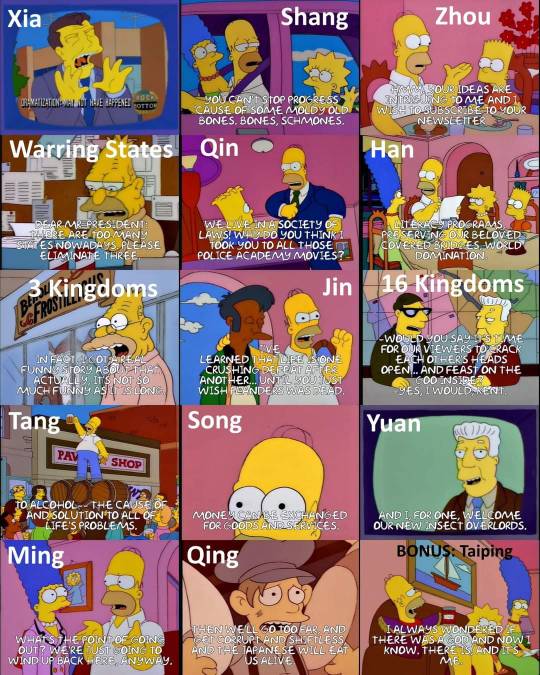
Chinese imperial dynasties as Simpsons quotes
2K notes
·
View notes
Text
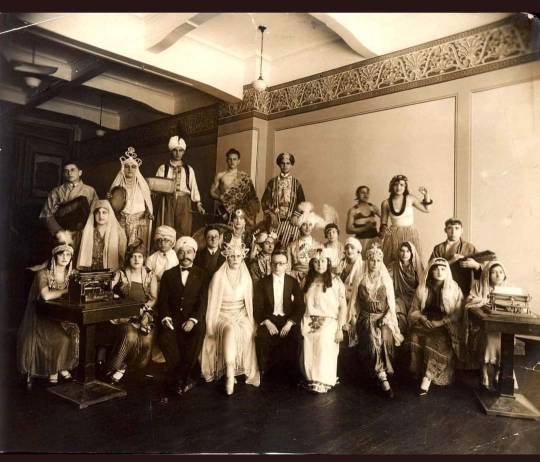
Baghdadi Jews celebrate Purim in Shanghai 1908
Source: Rachel Wahba
#jumblr#jewish#jews#nesyapost#jewish history#jewish culture#purim#Jewish holidays#purim upon us lads#shanghai#China#Jews in China#1908#baghdadi jews
1K notes
·
View notes
Text



Turqouise inlaid bronze dagger axe (ge), China, Late Shang Dynasty 12th-11th century BC
from Sothebys
4K notes
·
View notes
Note
Hi my friend wanted to ask about Chinese Opera and the red pom poms on their hats and their significance. I asked my mom and she said they were for decoration so I just wanted clarification
Hi! Thanks for the question, and sorry for taking ages to reply!
The pom poms you see on 盔头/kuitou (Chinese opera headdresses) are called 绒球/rongqiu (lit. "velvet ball"). They are often red, but can also be other colors, and vary in size. Ronqiu are decorative and serve to distinguish the many different types of kuitou from one another. Each type of kuitou is distinct in the number, size, and color of rongqiu that it's decorated with (of course, not all kuitou have rongqiu).
Below - a few different types of Beijing opera kuitou decorated with rongqiu (x):

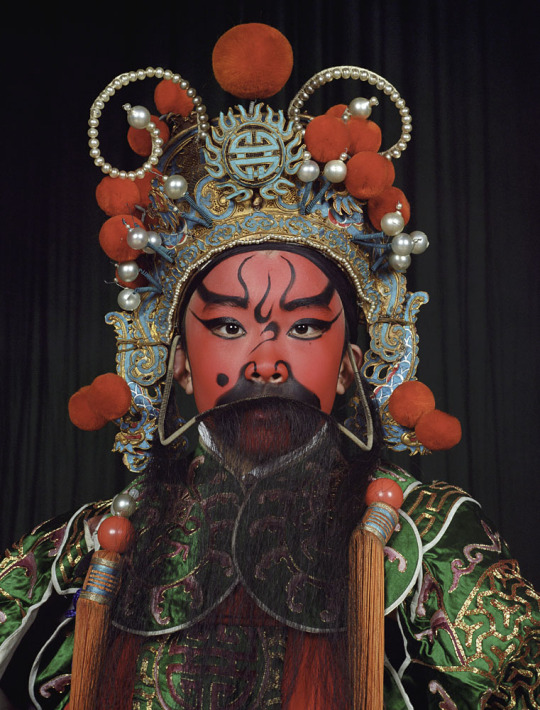
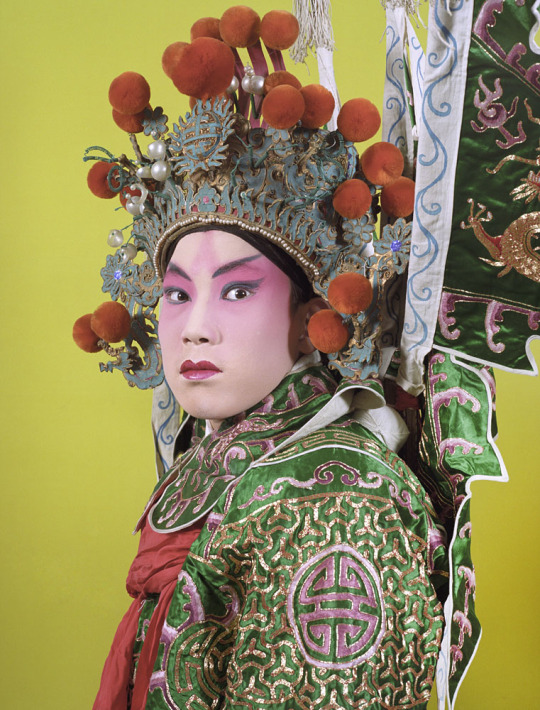
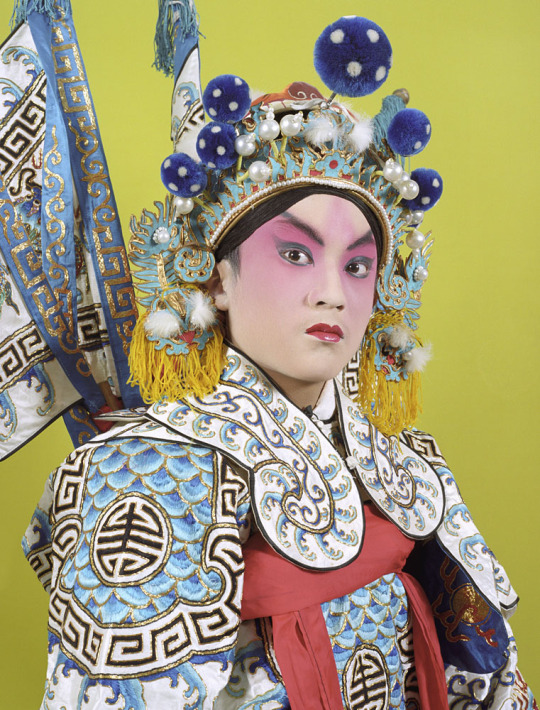

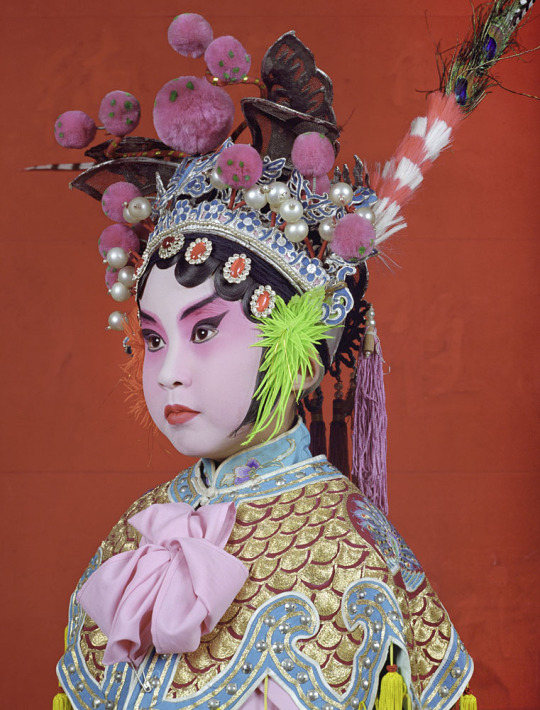
Rongqiu isn't used just for Chinese opera performances - it's a very common decorative item for Chinese headwear, especially for traditional/folk performances.
Below - examples of rongqiu use in folk custom/performance costumes, left to right: 1) 游神/youshen (wandering gods) procession in Fujian (x), 2) 英歌舞/yingge wu (yingge dance) performer in Guangdong (x), 3) & 4) 高跷/gaoqiao (stilt walking) performers in a 社火/shehuo parade in Gansu (x):

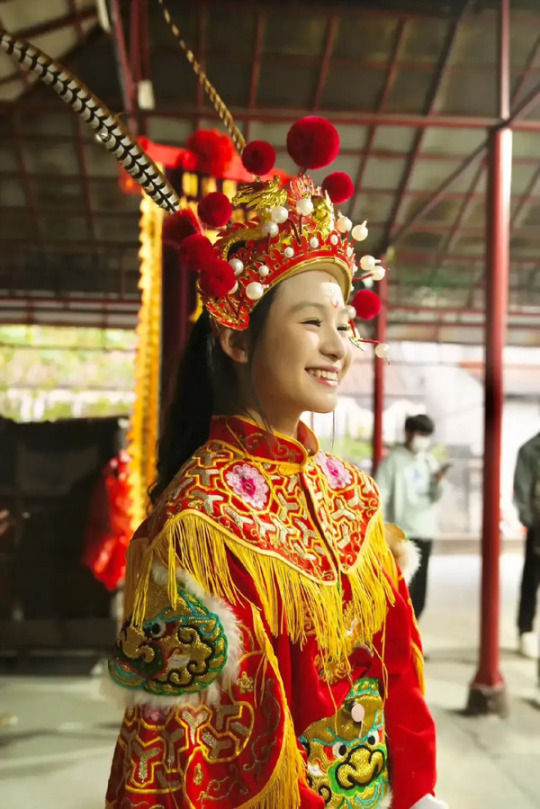

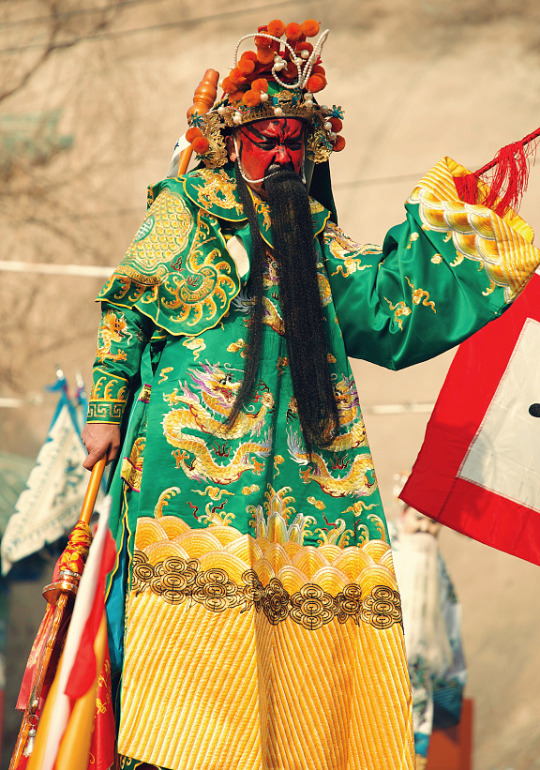
As a festive decoration, rongqiu was also widely used on bridal guan (crowns) from the Qing dynasty into the modern day.
Below - examples of rongqiu use in historical bridal guan: Left - a bride during the late Qing dynasty, circa 1890 (x); Right - a bride during the Republican era/minguo, in 1939 (x):
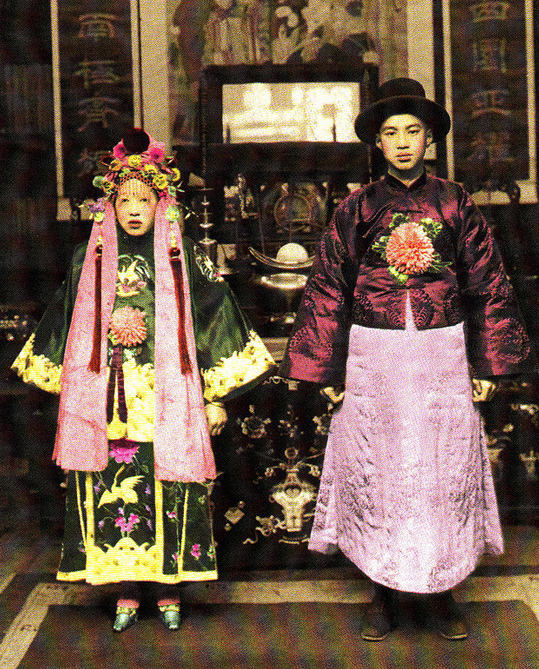
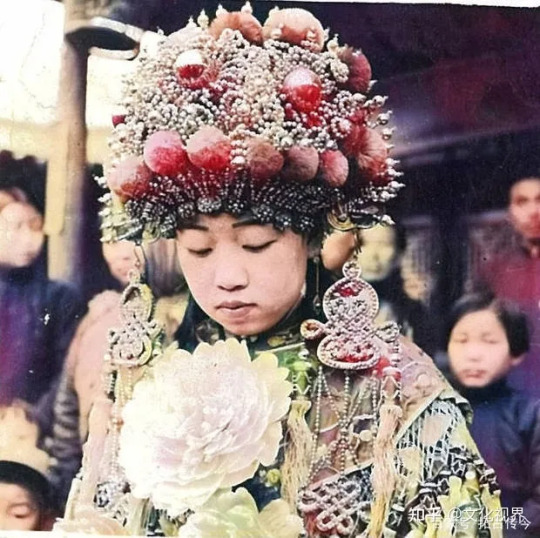
For some reason it's been extremely difficult to find sources on the origin of rongqiu that would shed more light on its significance, but based on historical paintings the use of rongqiu as a head ornament may have originated in the Qing dynasty. During the late Qing dynasty, it was fashionable among women to wear rongqiu on the sides of their hair, as can be seen in the paintings below (x):

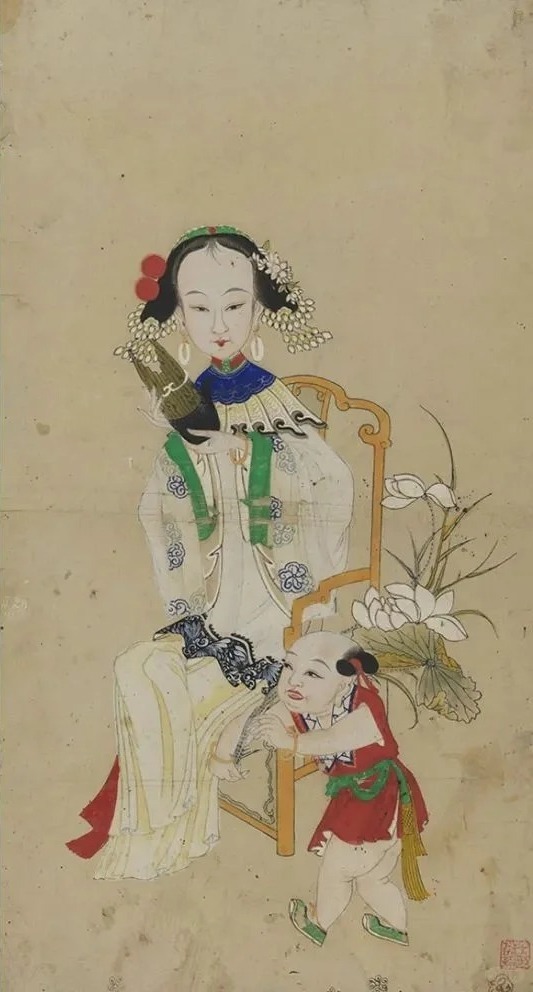
This particular style of rongqiu hair ornament was depicted in the 2012 historical cdrama 娘心计/Mother's Scheme:
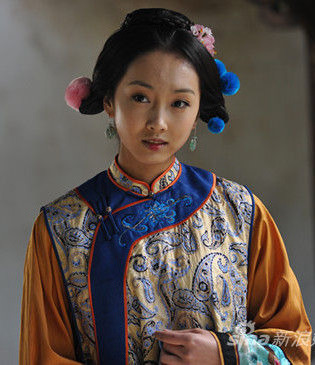
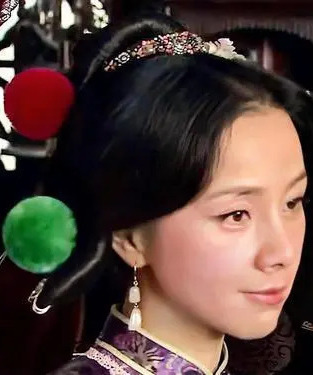
For more references, please see my rongqiu and kuitou tags.
If anyone has more information on the significance of rongqiu, please do share!
Hope this helps ^^
#rongqiu#pompoms#kuitou#chinese opera#opera costume#xifu#hanfu#history#reference#ask#reply#junpeicindystories#chinese fashion#chinese clothing#china
556 notes
·
View notes